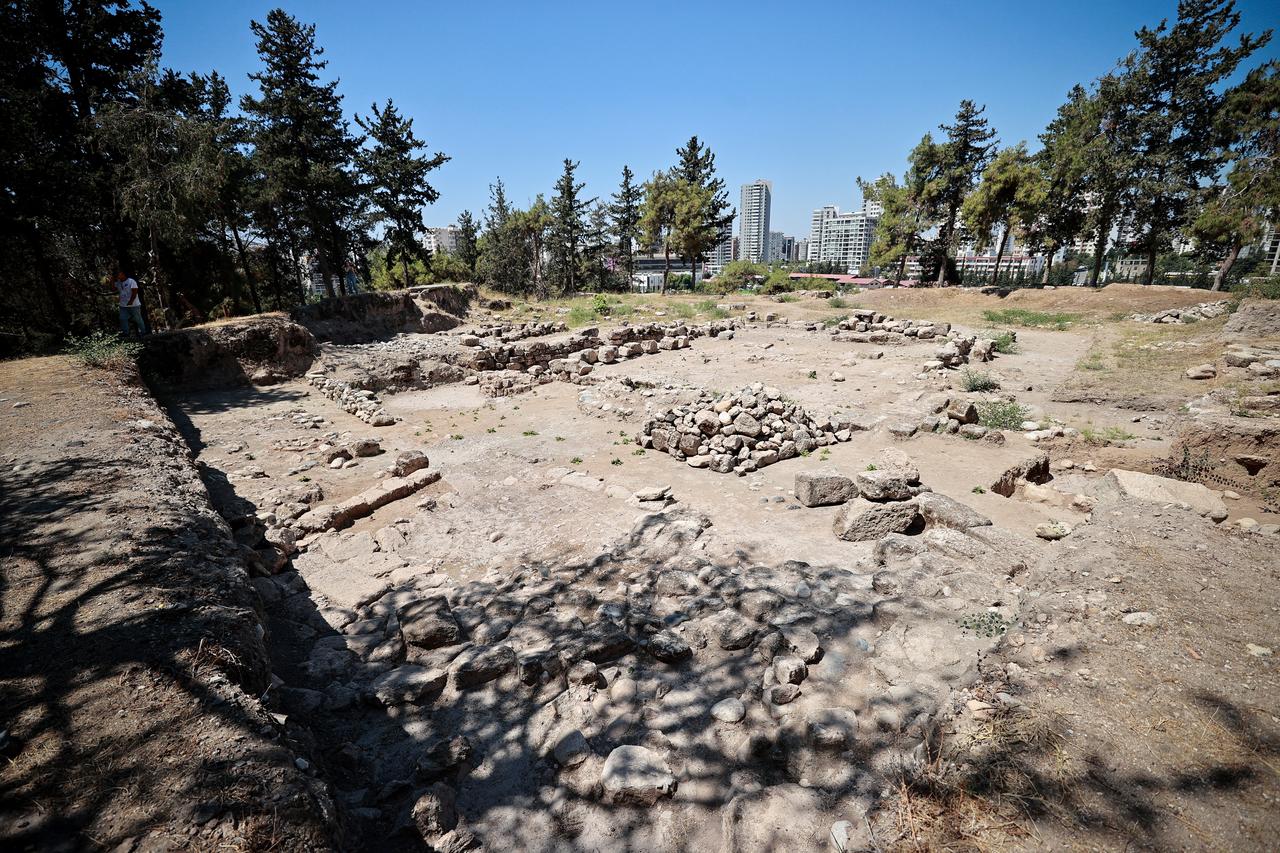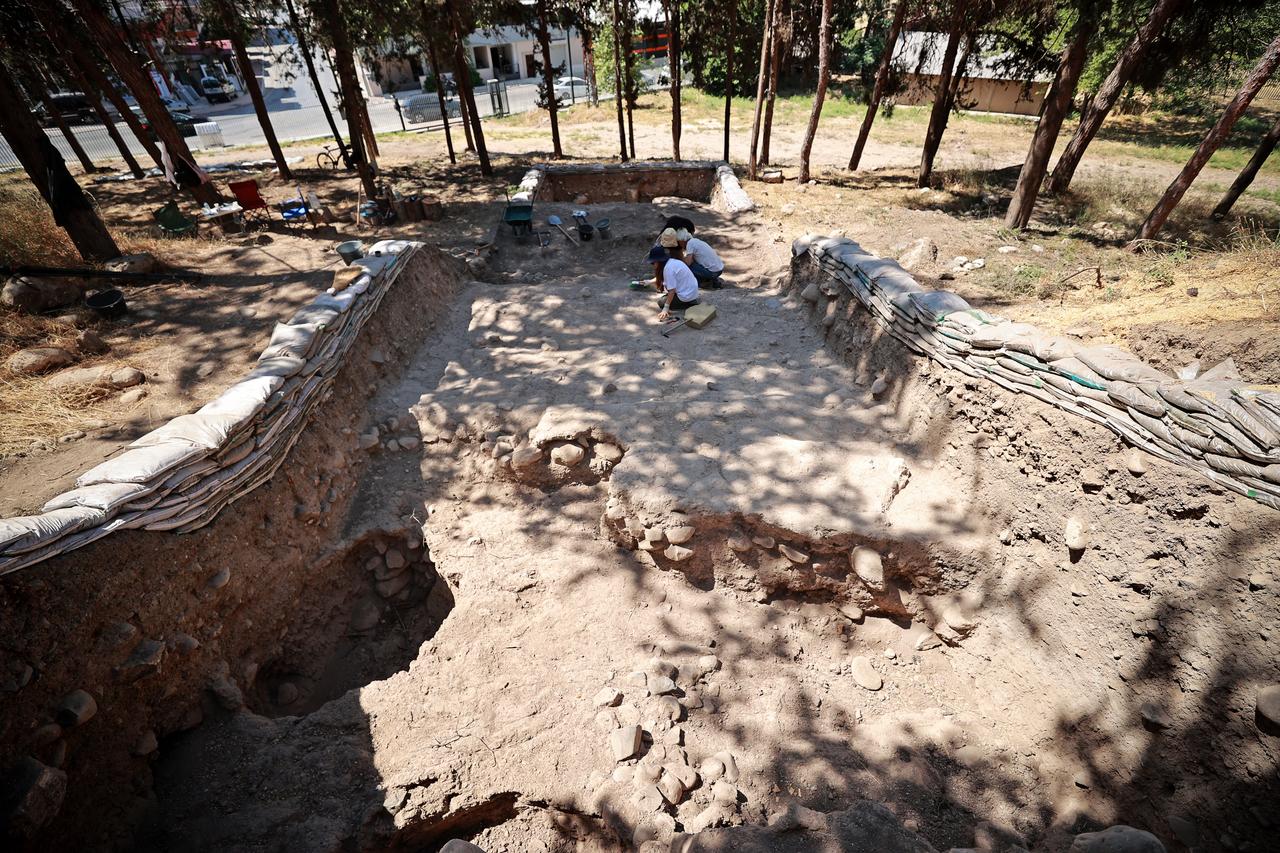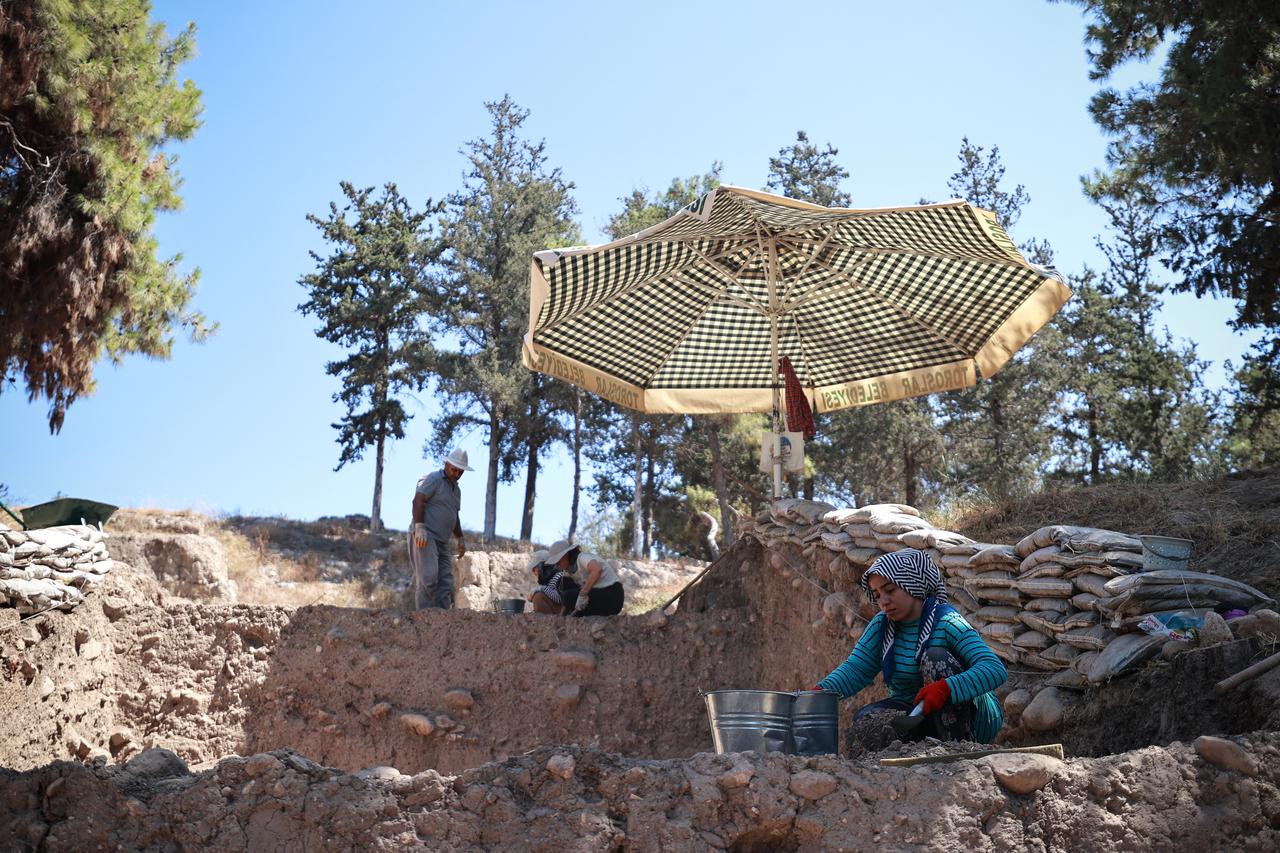
Archaeologists working at Yumuktepe Hoyuk in Mersin, Türkiye, have unearthed nearly 5,000-years-old food preparation and cooking area dating back to the Early Bronze Age, featuring a horseshoe-shaped hearth, a silo, and a fragment of a traditional clay oven.

Located in Mersin’s Toroslar district and often referred to as the “Cradle of Civilizations,” Yumuktepe has been under excavation since 1937. The site includes layers of settlements dating from the Neolithic period—around 10,000 years ago—up to the Medieval era. Current excavations, now in their 31st season, are led by Assoc. Professor Burhan Ulas of Inonu University.
Ulas’ team, comprising ten archaeologists, is continuing its work in coordination with a parallel Italian-led excavation and restoration project headed by Professor Giulio Palumbi of the University of Bari Aldo Moro. The site is also being developed into an open-air museum through the Archaeopark Project, supported by Mersin Metropolitan Municipality.

Ulas stated that the southern slope of the mound shows heavy signs of Medieval destruction, particularly from the 11th and 12th centuries. Excavations in this area revealed waste pits and a hearth containing remains of wheat and barley varieties.
A Medieval iron-smelting furnace was also identified, providing insights into rural industry in the Middle Ages.

One of the notable findings is the use of mudbrick in Medieval architecture. A newly uncovered structure, built of mudbrick blocks and stretching up to six meters, has raised questions about its original function.
While it is still unclear whether it served as a platform or a fortification wall, radiocarbon analysis dates the structure to between 1,050 and 1,250 A.D.

New findings have also shed light on Yumuktepe’s Early Bronze Age phase, previously identified only in a small area on the northwest side of the mound. Excavators have now uncovered a distinct architectural layer just below the 16th stratum on the southern slope. The layer includes a horseshoe-shaped hearth, a partial clay oven, and a grain silo.
Supporting the identification of the area as a food processing zone, archaeologists also found broken grinding stones and remains of agricultural products such as wheat, lentils, and terebinth (a type of wild pistachio). According to Ulas, this is the most substantial evidence so far of a Bronze Age food preparation site at Yumuktepe.
Restoration efforts are ongoing at the summit of the mound, where remains of a Medieval church settlement were previously unearthed. The team aims to integrate architectural elements from the 11th to 13th centuries into the site’s future as an open-air archaeological park.